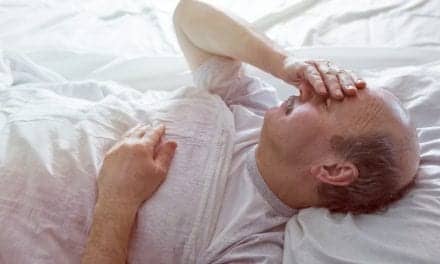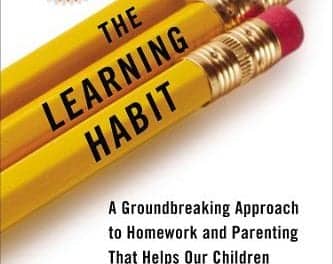 |
The Centers for Medicare and Medicaid Services (CMS) December 14, 2007, proposed decision memo regarding home testing drew large numbers of responses in the open comment period, showing the agency that industry insiders are concerned about the implementation of home sleep testing (HST), and that if CMS chooses to adopt portable monitoring, it is critical that the policy has all of the pieces in place.
The December 14 decision memo from CMS proposed “to expand coverage of CPAP to include those beneficiaries with a diagnosis of OSA made using a combination of a clinical evaluation and unattended home sleep monitoring using a Type II, III or IV device” as well as eliminate the current requirement of 2 hours of diagnostic time to determine the AHI. The review followed a formal request from the American Academy of Otolaryngology-Head and Neck Surgery and numerous informal requests from other stakeholders.
Considering the almost 200 pages of comments both for and against HST that were submitted to CMS in response to its December 14 proposed decision memo, it is easy to see that HST is an issue that sleep medicine professionals want implemented correctly. Commenters took issue with a number of proposals in the decision memo. Some of the most often cited concerns included the types of devices used, costs versus benefits, ability of patients to use the equipment, parameters of use, who should provide the service, and who should interpret the data as well as follow up on treatment.
POINTS OF CONTENTION
CMS proposes to allow the use of clinical evaluation and unattended HST using a Type II, III, or IV device for the diagnosis of OSA, in lieu of the traditional polysomnogram, and use this data to expand coverage of CPAP use.
Type II monitoring includes a minimum of seven channels, including EEG, EOG, chin EMG, ECG, airflow, respiratory effort, and pulse oximetry. Type III monitoring includes a minimum of four channels that includes ECG, airflow, respiratory effort, and pulse oximetry. Type IV devices record one or two bioparameters and typically include oxygen saturation or airflow.
These devices are all prone to data loss when wires and probes are accidentally pulled off in the unattended environment of the patient’s home. Type II and III devices are generally scored or reviewed by a sleep technologist, whereas Type IV devices use a variety of technologies with sophisticated computer-assisted algorithms to calculate respiratory disturbances. Type IV devices drew the most criticism.
Concern was also voiced about the ability of patients to successfully use HST devices in the home. Each type of device requires the patient to fully understand and follow the manufacturer’s directions for proper use and acceptable results. Thus far, the data supporting the use of these devices in a home setting has been based on small, carefully screened populations of patients with average ages below 50 years.
CMS is proposing to modify the criteria for a positive sleep study to remove the requirement for a minimum 2 hours of continuous recorded sleep and instead recognize shorter periods of continuous recorded sleep if the total number of recorded events during that shorter period is at least the number of events that would have been required in a 2-hour period.
Currently, CMS requires a minimum of 2 hours of recorded sleep and an AHI of 15, or 5-14 with documented symptoms of excessive daytime sleepiness, impaired cognition, mood disorders or insomnia, or documented hypertension, ischemic heart disease, or history of stroke. Although the current policy does not allow the AHI to be extrapolated or projected, the change could allow the use of data collected by a Type IV device for a relatively short amount of recording time, with an unknown amount of sleep.
It is feared that reduced recording time and the resulting estimated AHI may not be reflective of the patient’s true level of respiratory disturbance, resulting in a over- or under-estimation of the AHI and misdiagnosis that could be harmful to patients with comorbid conditions. Of the current proposals, William Leeds, DO, DABSM, Pulmonary & Sleep Associates, commented, “This is a misguided endeavor to short circuit an evidence-based approach to sleep medicine based on sound principles of good clinical practice.” Physician comments reflect the continued need for evidence-based practice.
WAITING FOR AN ANSWER
Among the yet unanswered questions that surround this issue and have not been examined by CMS are:
- Who should be permitted to conduct/interpret a home sleep test and make recommendations for CPAP treatment?
- Should programs that conduct home sleep testing be required to be accredited by the American Academy of Sleep Medicine or another similar accrediting organization?
- What method of CPAP titration should be used?
- What is the definition of “benefit from CPAP”?
- What defines proper follow-up and long-term management?
- Is the use of unattended HST followed by auto PAP right for everyone?
Comments that centered on this question left no room for misinterpretation—only properly trained and credentialed sleep technologists should perform or supervise HST. It was generally felt that there would be a rush of untrained allied health and non-health care companies jumping into HST. The lack of professional guidance would produce poor quality care and outcomes. That could spell higher costs for patients and CMS in the long run.
The feeling of commenters was just as strong that HST should be conducted from sleep laboratories and centers that are accredited by the American Academy of Sleep Medicine (AASM) to increase consistency and accuracy. Accredited sleep facilities have a proven commitment to high-quality care and have the expertise needed to provide proper care and follow-up to improve patient success.
In its decision memo, CMS cites both titration in conventional settings and the use of auto PAP. Traditionally, “technicians titrate CPAP pressures via a therapeutic mask pressure (ie, the minimum pressure that eliminates abnormal breathing) as determined by manual titration over the course of a night in a sleep laboratory.” CMS further cites the case for the use of auto PAP, “Alternatively, automatic computer-controlled CPAP titration (auto CPAP) can be performed over one or several nights … .” The memo further states that auto PAP can be attended or unattended, in a sleep laboratory or a home setting. This is to set the stage for unattended home use, but leaves the door open for lab-based titrations as well.
CMS is proposing that “due to the evidence demonstrating that no combination of diagnostic procedures adequately identifies all of those beneficiaries who will benefit from CPAP, the coverage of CPAP is initially limited to a twelve week period.” CMS does not define how or what is measured to assess benefit for a patient. Clinical judgments may vary widely across medical specialties. It is hoped that the patient will feel more rested and energetic along with improvement of other comorbid conditions that are negatively affected by OSA. But it should be clear that benefit is not always easy to measure.
Many of the commenters voiced their fears of “set ’em and forget ’em” providers that may drop off an auto-PAP device with some written instructions and the patient is then followed up by a phone call at a later date or a physician office visit in a month or two, only to discover the patient has not used the therapy. This is again an area where training and experience, along with a standardized schedule of follow-up contact, can mean the difference between success and failure for the patient.
This will be the debate of the future. Robert Aronson, MD, DABSM, Cardinal Sleep Disorders Centers of America, said, “CMS has a duty to make NCD decisions based on evidence-based data. The nation’s elderly should not be guinea pigs in a massive uncontrolled trial.” More evidence may be needed to help set parameters to identify who will best benefit from the use of HST.
Will CMS take the commenters’ recommendations to heart? Only the release of the final decision will tell. The expected National Coverage Analysis completion date is March 13, 2008.
Henry L. Johns, BS, RPSGT, CRT, CPFT, has worked in sleep medicine for more than 18 years (and more than 35 years in respiratory therapy). He is director of sleep and respiratory services for Pulmonary & Sleep Associates of Topeka, Kan. Contact him through [email protected].
REFERENCE
- Brennan TA, Horwitz RI, Duffy FD, Cassel CK, Goode LD, Lipner RS. The role of physician specialty board certification status in the quality movement. JAMA. 2004;292:1038-43.





![Heft or Hype? Weighted Blankets Go Mass Market [Editor’s Message]](https://sleepreviewmag.com/wp-content/uploads/2019/05/weighted-blanket-mass-market-440x264.jpg)